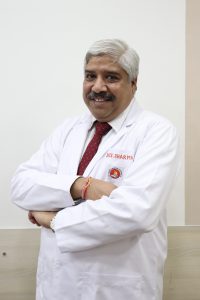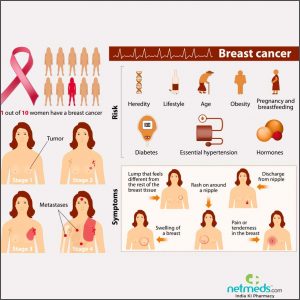look after your breast!
Breast problems in different ages require regular self-breast examination, follow-up, mammogram, additional imaging or a skin biopsy to confirm the diagnosis…
By Dr J B Sharma

Breast problems, such as breast lumps, breast pain or tenderness, nipple discharge or inversion, and changes in the skin of the breast, are common in women of all ages, from adolescents to older women. While it can be frightening to discover a new breast problem, most breast problems are not caused by breast cancer.
Common Breast Problems:
The common breast problems are pain, lumps, infections, nipple discharge, skin changes, cysts and fibro adenomas and breast cancer which can occur in any age.
Breast lump
Breast pain
Nipple discharge
Nipple inversion
Skin changes
More serious causes of skin changes on the breast can include less common forms of breast cancer, such as Paget disease or inflammatory breast cancer. Other, more common skin problems, such as rashes, moles, cysts, or skin infections can occur on the skin of the breast, as well. The evaluation of breast skin changes usually includes a breast examination and may include a mammogram. A skin biopsy may be needed to confirm the diagnosis.
 Abnormal mammogram — Many women have an abnormality diagnosed on screening mammogram and have no physical complaints or findings. The radiologist will indicate whether the abnormality requires follow-up, additional imaging or biopsy.
Abnormal mammogram — Many women have an abnormality diagnosed on screening mammogram and have no physical complaints or findings. The radiologist will indicate whether the abnormality requires follow-up, additional imaging or biopsy.
If the abnormality is a mass, an ultrasound is performed to see if the abnormality is cystic or solid. The radiologist can usually perform an aspiration for a cystic lesion or core biopsy of a solid lesion with ultrasound guidance. A clip should always be placed to guide any subsequent surgery that may be required if the biopsy is positive. The clip also provides confirmation that the proper area on the mammogram was targeted for biopsy.
In age 20s: All above mentioned abnormalities can occur and treatment depends upon the condition. If any lump is detected before your menstrual period, you may be advised to have a repeat breast examination after your period has ended. In this age group, breast lumps are often caused by hormonal changes and will resolve after your menstrual cycle. Fifroadenoma and cysts are more common in this age group. If any lump is persisting, breast ultrasound should be done. Needle biopsy may be required to rule out cancer. Mammography is usually not done. If any abnormality is not diagnosed on ultrasound, a breast MRI may be required.
In age 30s: All above mentioned abnormalities can occur and treatment depends upon the condition. Nipple discharge and infections are more common in this age group. Self breast examination should be done every three months to check any abnormality in the breast. If any lump is palpable, diagnostic mammography should be done along with breast ultrasound. Needle biopsy may be required to rule out cancer.
In age 40s: All above mentioned abnormalities can occur and treatment depends upon the condition. Self breast examination should be done every three months to check any abnormality in the breast. If any lump is palpable, diagnostic mammography should be done along with breast ultrasound. Needle biopsy may be required to rule out cancer. Women who are at high risk of breast cancer sometimes need to begin screening at a young age. This might include women who:
Carry genes that increase their risk of breast cancer, such as the “BRCA” genes
Have close relatives who got breast cancer at a young age
Screening mammography can be done to detect any abnormality and repeated every year till the age of 50.
In age 50s onwards
All above mentioned abnormalities can occur and treatment depends upon the condition. Self breast examination should be done every three months to check any abnormality in the breast. If any lump is palpable, diagnostic mammography should be done along with breast ultrasound. Needle biopsy may be required to rule out cancer. Screening mammography should be done every one-two year depending upon the risk of patient to detect any abnormality
(The author is Unit Head and Senior Consultant, Medical Oncology Sri Balaji Action Cancer Hospital, New Delhi)

